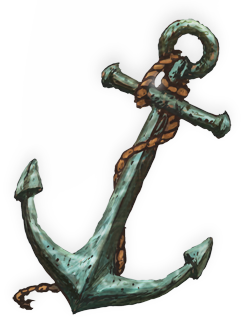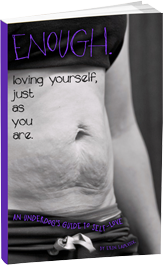I consider myself to be an expert-level goal setter.
This makes me sound arrogant and kind of like an asshole, but it’s true.
I’m not super good at a lot of stuff. I can’t dance to save my life. I can’t twerk (my kids groan when I try, and I threw my back out once). I can’t sing well, so I make up for lack of pitch with volume. I can’t lie without twitching and folding (horrible at poker), I don’t play a musical instrument, I don’t sit still long enough to tolerate knitting, cross stitch, or crochet.
GOALS, though. I can do goals.
As a go-big-or-go-home kind of person, I LIKE goals. Goals get me efficiently where I want to go. I like BIG goals. I like setting a goal that makes me a little bit afraid, because I know I’m going to have to dig deep to crush it. I have a pretty active and brilliant imagination, so the goals I come up with in my head are quite detailed.
And, as far as execution goes, I almost always hit the goals I set for myself. I can’t remember the last time I set a goal and didn’t accomplish it. My cycle of success is (finally) established, and I don’t fail often.
EXCEPT WITH WEIGHT LOSS.
Up until recently, when it came to weight loss, hitting my goals was always difficult. I fell. I failed. I would tell myself “to the gym tomorrow DAMNIT, JUST GET IT DONE,” and then I wouldn’t. I’d track macros for two weeks, take a break, then struggle to get back on track. I made monthly menus for meals, made a grocery list, and still ate crappy food. I ate treats. (omg i love treats.)
In my head, the goals for fitness and weight loss were good. In my head, the goals were GREAT.
Except they weren’t, because I just couldn’t do them.
It turns out, I wasn’t hitting my exercise goals because they were the wrong kind of goals.
[I can hear you now. “What is a wrong goal? How does that work?” I’m so glad you asked!]
There are two kinds of goals, and each type of goal requires a specific set of skills and focus in order to accomplish it – short-term, hard core, shoot-for-the-stars goals (a “short goal”), and long-term, gentle, sustainable, slow-and-steady-climb goals (a “long goal”).
A Short Goal requires you to push as hard as you can for a small period of time, just like a sprint on a race track.
A Long Goal requires you to pace yourself, conserve your strength, and buckle down for the long haul, like a double marathon across hilly country.
And, as luck would have it, long-term, sustainable change (like the kind required to facilitate and maintain weight loss) requires the second kind of goal.
I AM SO BAD AT THAT SECOND KIND OF GOAL.
When it comes to activity and goals, accomplishments and success, I prefer the kind of things that take one, quick, intense, hard sprint. I like projects that I can finish in one sitting. I enjoy a hard deadline, two-week, brain-crunching task that requires all-nighters, skipped meals, red eyes, hair pulling, and dinner at my desk. I like making just enough cookie dough to bake one sheet of cookies. When I start something and don’t get to finish it up, I get frustrated. When I’m making my bed and the kids jump on it before I’m done, I get ANGRY. I like Short Goals with timelines that test my potential, push my brain farther than it’s gone before, and wrap up at the end neat and tidy, leaving me with that last-day-of-school, just-quit-my-job feeling of freedom and release.
For me, short goals are best.
Weight loss doesn’t work that way.
No matter what 21 Day Fix or 24 Day Challenge or Shakeology or 7 Day Cleanse tells you, when it comes to weight loss, it doesn’t work that way.
Successful weight loss is about your ability to set and execute LONG Goals. Sustainable goals. “Conserve your energy and save something in the tank for mile number fifty-six” goals. Slow, steady, boring, monotonous, draining, mentally challenging goals.
When it comes to weight loss and Long Goals, your goals should require CONSISTENCY. Your goals should tap into your mental toughness, because if you’re doing it right, you will not hit a finish line. Sustainable change HAS no finish line. If you are truly interested in sustainable, permanent, life-long, lifestyle change, there is no finish line. There is only “go to bed and do more tomorrow,” then more the day after that, and the day after that, stretching out as far as your life will carry you.
When you set yourself a Long Goal, when *I* set MYSELF a Long Goal, all the GRRRR and UMPH and “grab life by the balls” tendencies I have that make me so adept at accomplishing Short Goals need to be set aside. I have to find and use an entirely different set of skills, and tap into a different type of discipline. Instead of thinking to myself “How can I challenge myself to go harder than I’ve ever gone before” and requiring discipline and sleeplessness and energy to get things done, I have to ask “What do I need to ask from myself to take JUST ONE STEP FARTHER TODAY, and then STOP.” To hit a Long Goal, I have to hold myself back. I have to pace myself, and the discipline required is “not too much.”
(…because I like “too much.” It’s lots of fun.)
When I figured out the difference between Short Goals and Long Goals, I learned to set the right kind of goal for weight loss. When I embraced the Long Goal and changed my mindset, I FINALLY found success. I was able to do what needed to be done without burning myself out, without failure, and without feeling like I wasn’t trying hard enough.
5 Tips for Setting Long Goals:
- Keep it Simple. Go more for big picture, less for detailed content. Saying “I will go to the gym once every week for a year” is good. If you say “I will lift this and that and this much and this number of sets every week for one year,” that’s less good. When we’re in it for the long haul, we don’t think about how many steps it’ll take per mile, we count the miles themselves. Count visits and weeks, not details inside. Save the details for after you get there. (Take a book with your workouts in it, and just use the book. Don’t worry about what’s in the book when you set a Long Goal.)
- Leave Wiggle Room. Leave yourself room to compromise and shift, bend and sway. The more rigid your goal, the less you are likely to hit it consistently. I say “two gym visits a week,” not “Tuesday and Thursday are my gym days.” My schedule rotates around three jobs and three kids, so I have to leave room to adapt.
- Leave Yourself Wanting More. Instead of “go big or go home,” (my Short Goal motto), I say “do enough and come back tomorrow.” I make it a point to leave the gym after a good workout, but before I feel like I’m ready. I leave with a feeling of longing and want, and it helps leverage my next visit. I finish my food before I’m stuffed full, but after I’ve had enough. I get enough sleep, but not so much that I screw up my next night. Leave yourself wanting more, and you will find consistency easier to accomplish.
- Take Small Bites. Just like when you were a kid feeding yourself steak, “TAKE SMALL BITES.” Don’t bite off so much that you choke and struggle. Spend the time to cut off just as much as you can chew, then chew it well, swallow, and go again. Work out a bit here and there instead of all at once on one day. IT WILL EVENTUALLY ALL GET DONE, just maybe not all at once.
- If you Feel the GRRRR, SLOW DOWN. I pay close attention to the goals I set for myself. If I set a goal that makes me feel like I’m taking down Goliath, it’s probably a Short Goal and most likely not sustainable. If I set a goal that makes me feel responsible and steady, it’s most likely a Long Goal and will eventually become habit.
AND THAT IS THE LONGEST LONG GOAL THERE IS… to turn your weight loss actions into such sustainable change, they become habit. To take every diet change one at a time, get it to stick until it’s not change at all, and instead “it’s just what we do.” To turn all good changes into habits. We want to do that with ALL the things healthy. Make them stick. Make them habit.
Take some time to evaluate your current exercise goals. Are they Short Goals, or Long? Are you successful with them? Can you change some of your Short Goals into Long ones, in order to gain more traction and find success?
Just keep going. Find your Depth and PUSH HARD, but not TOO hard. The key to true health is in your mental state, and with the right mind shift you can be set free.
Thanks for reading!
=============================
For more like this, opt in to my newsletter or find me on Facebook. Cheers!











LOVE THIS!! <3
Great insight Erin. I was trained from an early age at “watching weight” and all things diet and calorie related. It’s only been about 10 years that my paradigm has shifted into “lifestyle change” from “diet.” I was very careful to tell my daughter that I’m eating healthy for my health. Body image is a slippery slope for us ladies. Still, our little ones soak in everything they see and hear and do as I say and not as I do rarely works.
Anyway, I put my goals toward feeling healthy, being healthy and enjoying how my clothes fit. I feel rather strongly that all scales should be smashed with sledgehammers, burned, pitched from very tall heights and then thrown away. Too many “weigh-ins” in my past. Taking measurements is an excellent way for me to track my progress (if I feel like tracking it). And MUSCLE weighs more than FAT! My 2 cents. I am very much a work in progress. My favorite saying is, ” persistence not perfection.”